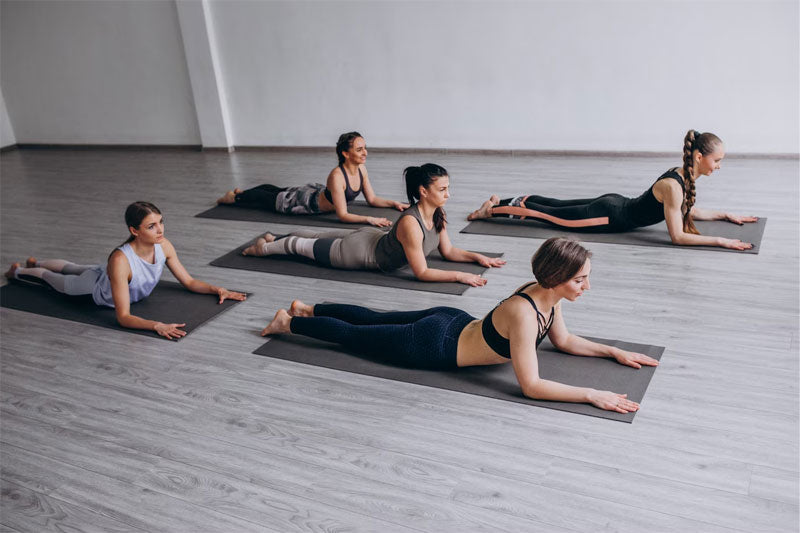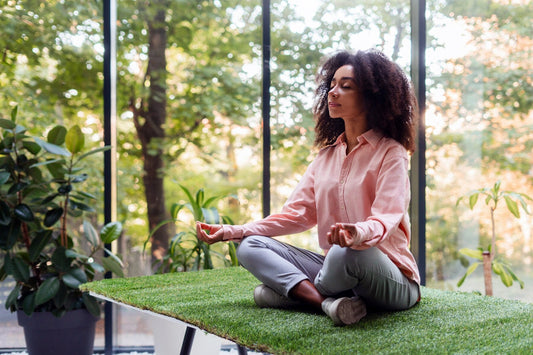Ready to achieve better sleep? Discover the power of yoga in improving sleep quality. In this blog, we'll guide you through six simple yoga poses that incorporate deep breathing and calming movements to help you enjoy restful nights. Say goodbye to restless tossing and turning – these yoga poses will help you fall asleep shortly. Let's dive in and learn how to prepare your mind and body for a tranquil bedtime experience.
The Vital Role of Sleep in Wellness:
Sleep isn't just about resting; it's a fundamental pillar of overall health and quality of life. During sleep, your body engages in self-healing processes, restores the immune system, and organizes memories and learning. It's like preparing for tomorrow's adventures while you're peacefully asleep.
When you lack sufficient sleep, your body's functionality diminishes. Concentration becomes a challenge, irritability sets in, and your vulnerability to illnesses increases. Without proper sleep, your body's vitality wanes.
On the other hand, consistently enjoying quality sleep offers multiple benefits. Your energy level remains high, your focus improves, and your immune health strengthens. Additionally, quality sleep enhances mood, contributing to a happier and more positive outlook on life.
Yoga's Synergy with Sleep:
Yoga and sleep share a mutual affinity for balance and well-being. Just as yoga promotes physical and mental equilibrium, it also complements sleep by fostering relaxation and tranquility.
Scientific research supports the stress-reducing(, flexibility-enhancing, and clarity-promoting benefits of yoga. However, yoga's benefits extend beyond wakefulness – it also works wonders for enhancing sleep quality.
Discover the Sleep-Boosting Yoga Poses:
Let's explore six gentle yoga poses designed to create the ideal conditions for restful sleep. These poses incorporate deep breathing techniques and gentle stretches to ease your body into a state of relaxation.
- Makarasana Yoga - Crocodile Pose:
This reclined position facilitates better breathing, signaling your body that it's time to wind down. Focus on your breath's rhythm without trying to modify it. The goal is smooth, calm, and deep breathing, akin to the gentle ebb and flow of ocean waves.
- Balasana - Supported Child's Pose:
A nurturing pose that encourages introspection and security. You can customize this pose's comfort level with cushions and blankets to make it uniquely soothing.
- Supta Matsyendrasana - Reclining Twist:
Relieve tension from your back and prepare your body for sleep with this twist. Enjoy the gentle spinal rotation and its relaxing effects.
- Vipritasana – Legs up the wall:
This restorative position induces relaxation, benefits the upper body, and strengthens respiratory muscles. By resting your legs against the wall, you facilitate venous return, promoting relaxation and sleep readiness.
- Corpse pose savasana:
The final pose, Savasana, is a finishing touch that integrates the benefits of the previous poses. Lie down, close your eyes, and focus on your breath to attain a harmonious state of relaxation.
- Supta Baddha Konasana - Reclined Bound Angle Pose:
This pose gently opens the hips and thighs, inducing relaxation throughout your lower body. It's a perfect addition to your sleep-enhancing routine.
Embrace the Calm: The Significance of Deep Breathing in Yoga
Engaging in yoga practice, which promotes mindful and purposeful deep breaths, allows you to attain a deep sense of relaxation and tranquility. This intentional concentration on your breath contributes to soothing the nervous system, decreasing stress, and quieting the mind – all pivotal aspects in readying your body for peaceful sleep. Breathing deeply during practice yoga not only improves oxygen intake but also activates the body's relaxation response, fostering a state of calm that can significantly assist in falling asleep more effortlessly and experiencing a more rejuvenating rest.
The Purpose of a Yoga Mat:
A yoga mat offers a comfortable surface for practice, providing stability and cushioning for various poses. It creates a designated space, enhancing the calming effects of yoga and aiding better sleep quality. Whether gentle or dynamic, the mat supports your journey to improved well-being.
Additional Tips for Better Sleep:
- Tech-Free Zone: Create a gadget-free sanctuary in your bedroom. Blue light from screens disrupts melatonin production. Opt for calming activities like reading or listening to soft music instead.
- Bedtime Ritual: Establish a soothing bedtime routine. Sip herbal tea, practice deep breathing, and signal to your body that it's time to unwind and prepare for sleep.
- Supplements: Consider dietary supplements to enhance sleep quality naturally. Magnesium, melatonin, and herbs like Ashwagandha can help relax the mind and promote better sleep.
- Enhancing Melatonin Levels: Try Melatonin supplements for better sleep! It helps your body find its sleep rhythm, relaxes you, and makes falling asleep easier.
- Ashwagandha Supplement Balance your wellness with Ashwagandha Supplement! It helps manage stress, stay calm, and sleep better. A simple way to enjoy a healthier you!
Conclusion:
Elevate your sleep experience with these six sleep-boosting yoga poses. While these poses contribute to better sleep, remember that optimizing sleep quality involves holistic practices. Keep electronic devices out of the bedroom, cultivate calming bedtime rituals, and explore quality supplements to support your sleep journey. With the combination of yoga, mindful habits, and thoughtful supplementation, you'll be well on your way to enjoying nights of restful slumber and waking up feeling refreshed and revitalized. rewrite the above in american fluency using simple regulatory terms






